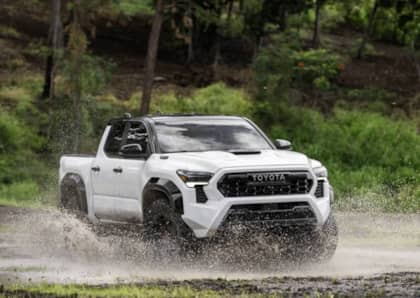The 4 Weirdest Monster Trucks To Bear The Bigfoot Name
When Bob Chandler started using his souped-up Ford F-250 in the mid-'70s to promote Midwest Four-Wheel Drive, he had no idea that within a few short years he'd create an entirely new form of motorsport.
After years spent breaking parts on his pickup and developing new ones that allowed him delve even farther off-road, Chandler created Midwest Four-Wheel Drive to help others throughout the St. Louis region modify their trucks. As his business grew, so did the size of his Ford, which transformed from the shop truck to the corporate mascot. Nicknamed "Bigfoot" after the way Chandler tended to drive (heavy on the gas, light on the mechanical empathy), the pickup soon took on a life of its own.
By the end of the decade, Bob was getting paid not just for his 4x4 expertise, but also to bring Bigfoot with him for displays, mud racing and tractor pulls. In 1981, after a lot of goading from friends and associates, Chandler finally videotaped himself crushing a pair of junk cars, just to see if he could do it, and the rest was history. That, combined with the truck's first big-screen appearance in the film "Take This Job and Shove It" vaulted Bigfoot into the national consciousness, introduced the term monster truck to the world and launched the sport as we know it today.
Thanks in large part to sponsorship from Ford, the Bigfoot family grew by leaps and bounds as Chandler and his team tried to keep up with all of the booking requests being thrown his way. It was the '80s, and things got a little weird as Bigfoot, Inc. started experimenting with more than just pickups in its quest to keep audiences entertained.
Let's take a quick look at four of the strangest vehicles to ever wear the Bigfoot logo.
1. Bigfoot 5
It's only natural that as the trucks got bigger, they'd also get more powerful, because it takes a lot of horsepower to move the industry-standard 66x43x25-inch tires first put into use by Bob Chandler and crew on Bigfoot 2.
Bigfoot 5, however, is something else entirely. In fact, there's only one reason why this monstrosity was ever built: Chandler came across a set of 10-foot tall Firestone Tundra tires and thought they'd look cool underneath one of his trucks.
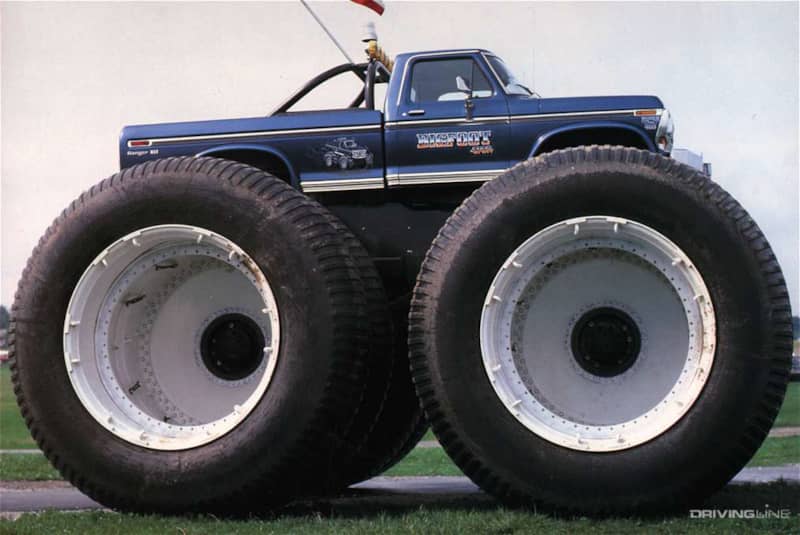
Built in 1986, Bigfoot 5 was never intended to compete in the dirt. It's amazing that the vehicle can even move under its own power, as it weighs an astounding 28,800 lbs in standard trim. Each of its tires—originally designed to be used on the snowy arctic tundra by a U.S. Army "land train" in Alaska—weigh a full ton, and on occasion, a second set of dually tires were also installed on the truck, bringing the total mass of the rubber to an astonishing 16,000 lbs.
The "heaviest pickup ever built" according to the Guinness Book of World Records was also the tallest. In fact, wasn't the only member of the Bigfoot team to employ the Tundra tires, which were installed on Bigfoot 1, 2 and 4 at first, and then later on Bigfoot 7. Rebodied in 1989, Bigfoot 5 currently serves as an enormous display truck at Bigfoot Inc. in St. Louis, although the Tundra tires still occasionally make an appearance on other trucks.
2. Bigfoot Shuttle
It's hard to think of a less-menacing starting point for a monster truck than a Ford Aerostar minivan, but that's exactly the concept behind Bigfoot Shuttle. Built for a TV program called "Return of the Monster Trucks," Chandler initially kept the stock 3.0L V6 and somehow thrilled audiences with a mere 145hp (later augmenting it with a nitrous oxide system).
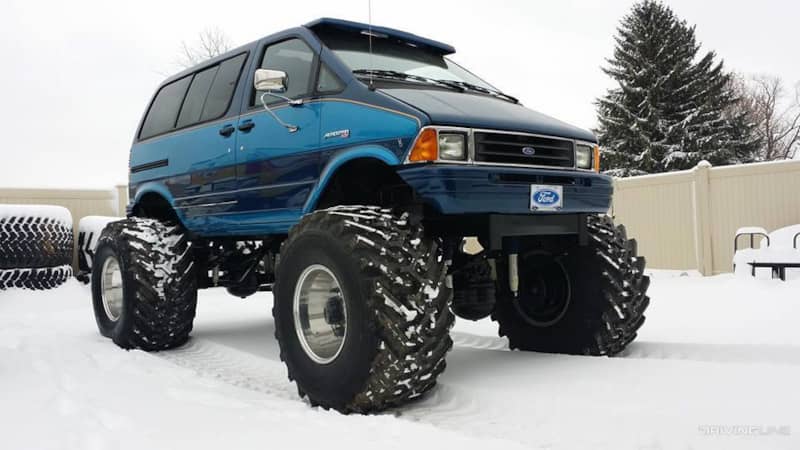
The van needed all the help it could get, given that it weighed nearly 8,000 lbs. Unlike most monster trucks of the era, Bigfoot Shuttle rode on more modest 48x20x20 tires, giving it a bit of a handling advantage against larger competitors. The Shuttle toured off and on for several years but was eventually sold in the early 2000s.
3. Bigfoot Fastrax
The Bigfoot team must have had an intense fascination with the Ford Aerostar, because it made a second appearance on the circuit in the form of the Fastrax. This unique car crusher merged a fiberglass Aerostar shell—cut in half—onto an M48 armored personnel carrier platform, making it a tank-treaded menace. Power was derived from not one, but two, seven-liter Ford V8 engines, and the entire vehicle weighed just over 23,000 lbs.
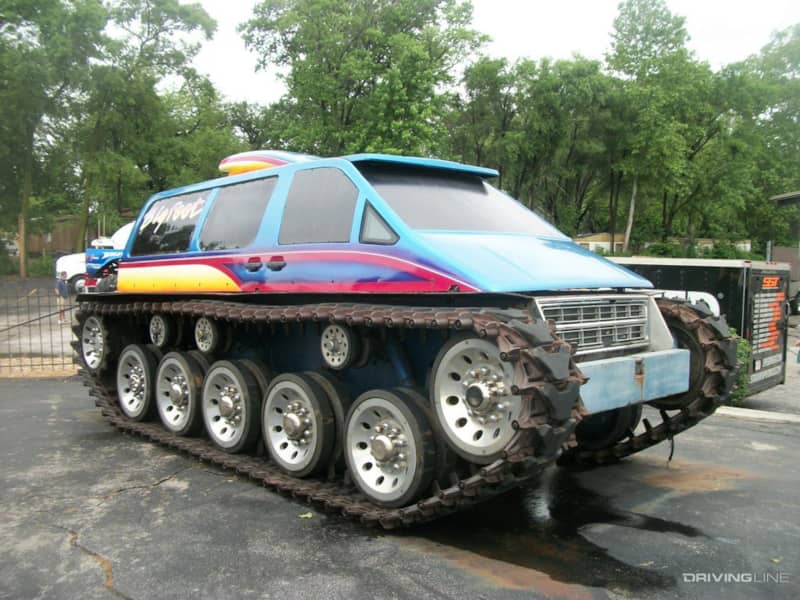
Bigfoot Fastrax was remarkably quick and agile, and for a number of years it was a lively presence on the monster truck scene. Surprisingly, no one seems to know where it is now. After it was retired from competition, it resided on display at Bigfoot headquarters, but hasn't been seen since the company moved to its most recent location.
4. Bigfoot 20
Proving that the Bigfoot team is still able to innovate, Bigfoot 20 became the world's first battery-powered monster truck in 2012. Built by Nigel Morris, driver of Bigfoot 17 (yes, there are a seemingly unlimited number of Bigfoots out there), Bigfoot 20 features 30 Odyssey PC1200 batteries and weighs a hefty 11,000 lbs. Its 260 kilowatt electric motor translates into roughly 350hp and 850 lb-ft of torque, and the truck's steering and braking system get their own dedicated battery system.
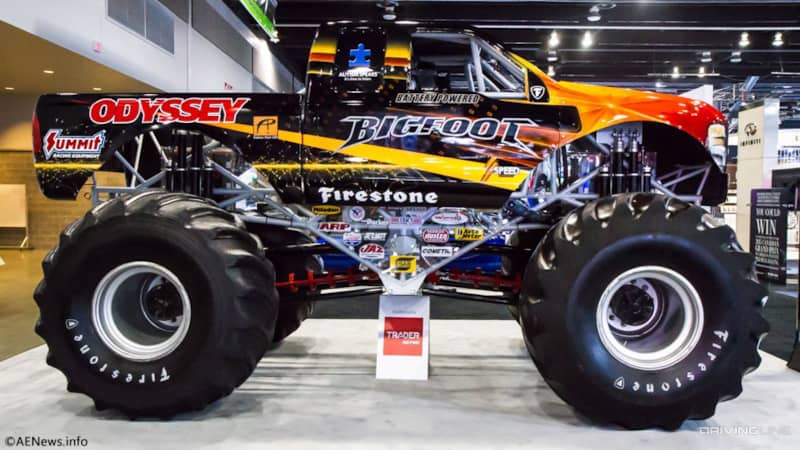
Primarily intended as a proof of concept, BF 20 was unveiled at SEMA the year it was built. While Morris has done occasional car crushing with the battery-behemoth, the near-silent Bigfoot is mostly a proof-of-concept vehicle not intended to compete against its nitro-powered brethren.






